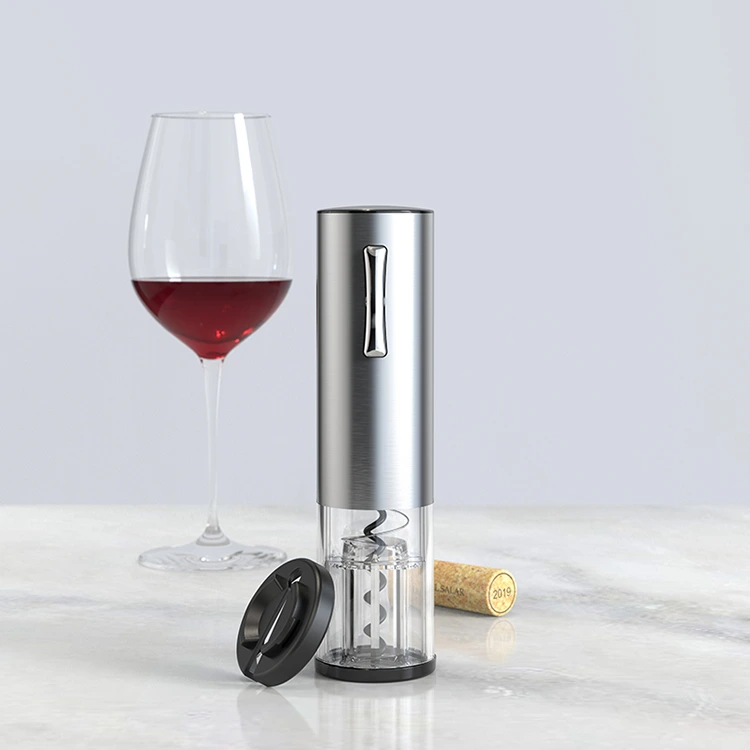The Difference Between Bottle Openers of Different Materials
2025-06-26
Bottle openers are an essential tool in everyday life, whether for personal use or in social settings. While they all serve the same primary function—to remove caps from bottles—the materials used to create them can significantly affect their design, durability, and overall performance. In this essay, we will explore the differences between bottle openers made from various materials, such as steel, aluminum, plastic, wood, and rubber, and how these differences influence their functionality, aesthetics, and user experience.
1. Steel Bottle Openers
Steel is one of the most commonly used materials for bottle openers, particularly stainless steel. It is known for its strength, corrosion resistance, and longevity. Steel bottle openers are typically durable, able to withstand high levels of wear and tear without breaking or losing their effectiveness. The strength of steel allows for the design of compact, sturdy openers that can easily open both twist-off and pry-off caps.
The advantage of steel openers lies in their longevity and resistance to rust, making them ideal for use in both wet and dry environments. Many high-end bottle openers are made from stainless steel, offering a sleek, polished appearance while maintaining functional superiority. However, steel bottle openers can be heavier compared to those made from other materials, which may make them less convenient to carry in pockets or small bags.
2. Aluminum Bottle Openers
Aluminum is another popular material for bottle openers, especially in lightweight, portable designs. Aluminum bottle openers are generally lighter than steel, making them easy to carry around for various activities such as picnics, tailgating, or camping. Despite being lighter, aluminum openers can still maintain good strength and durability, although they may not be as resistant to heavy wear as steel.
The main advantage of aluminum openers is their weight-to-strength ratio, which allows them to be both functional and easy to transport. Aluminum also has excellent resistance to corrosion, making it ideal for environments where moisture is prevalent. However, aluminum bottle openers can be prone to scratching and may dent or deform more easily than steel openers, especially under heavy use.
3. Plastic Bottle Openers
Plastic bottle openers are typically the most affordable option, and they are often designed for casual, everyday use. They are lightweight and come in a wide range of colors and designs, making them aesthetically appealing to a broad audience. Plastic openers are often molded into creative shapes and ergonomic forms, making them easy to grip.
While plastic bottle openers are lightweight and inexpensive, they are generally less durable than their steel or aluminum counterparts. They can break or crack under pressure, especially when opening bottles with tight caps or heavy use. However, some high-quality plastic openers are made from reinforced plastics, which improve their strength and resistance to breaking. They are best suited for casual, home use but may not be ideal for environments where reliability and durability are critical.

4. Wooden Bottle Openers
Wooden bottle openers offer a unique blend of rustic charm and functionality. Often crafted from hardwoods like oak, walnut, or maple, these openers are favored for their aesthetic appeal. Wooden openers are typically more decorative than utilitarian, adding a natural element to kitchen tools or bar accessories. Many wooden bottle openers are handmade, and they often feature intricate carvings or personalized engravings, making them popular as gifts or collector’s items.
While they are visually appealing, wooden bottle openers can be less durable than their metal counterparts. Wood is susceptible to wear and tear, especially when exposed to moisture or excessive force. It can crack, warp, or splinter over time, particularly if not maintained properly. Wooden openers are best suited for light use and decorative purposes, and care should be taken to avoid prolonged exposure to water, which can damage the wood.
5. Rubber and Silicone Bottle Openers
Rubber and silicone bottle openers have gained popularity due to their flexibility, grip, and comfort. These openers are typically used for people who need a more ergonomic design or those with limited hand strength. The rubber or silicone coating provides a non-slip surface, making it easier to grip bottles, especially when dealing with slippery or wet surfaces. These materials are also lightweight, durable, and resistant to wear.
However, rubber and silicone bottle openers tend to lack the rigid strength of steel or aluminum openers. While they work well for twist-off caps, they may not be as effective for pry-off bottle caps. Additionally, rubber and silicone can degrade over time, especially with exposure to sunlight and extreme temperatures, which could reduce the opener’s lifespan.
6. Combination and Hybrid Bottle Openers
In some cases, manufacturers combine different materials to create hybrid bottle openers that capitalize on the strengths of each material. For example, a bottle opener may have a steel core for strength and durability, while featuring a rubber or silicone grip for enhanced comfort and ease of use. Some openers may combine wood and metal for an aesthetic yet functional design, while others may incorporate plastic for lightweight portability combined with steel or aluminum for strength.
Hybrid openers offer the benefit of versatility and improved performance across various environments. However, their design complexity can sometimes result in a higher cost, and they may not always offer the same level of durability as a fully metal or fully plastic opener.
Conclusion
The choice of material for a bottle opener can significantly affect its functionality, durability, and aesthetic appeal. Steel and aluminum openers are prized for their strength and longevity, with steel offering superior durability and aluminum providing a lighter, more portable option. Plastic openers are inexpensive and lightweight but may lack long-term durability. Wooden openers offer a unique, aesthetic appeal but are less suited for heavy use. Rubber and silicone openers excel in comfort and grip but may be less durable under prolonged use. Ultimately, the best material for a bottle opener depends on the user’s specific needs, whether they prioritize strength, portability, design, or comfort.
As a professional manufacturer and supplier, we provide high-quality products. If you are interested in our products or have any questions, please feel free to contact us.


